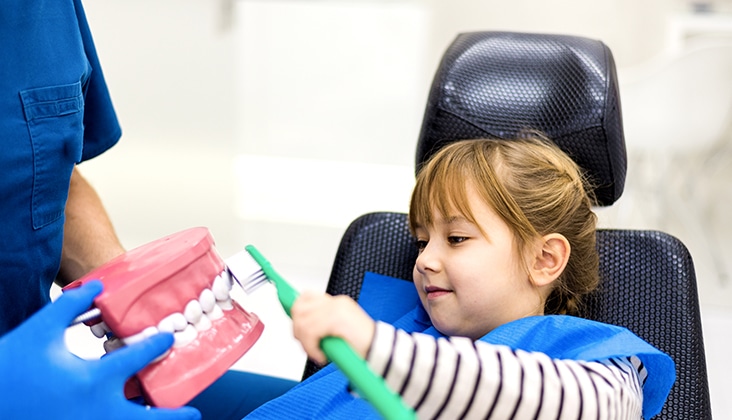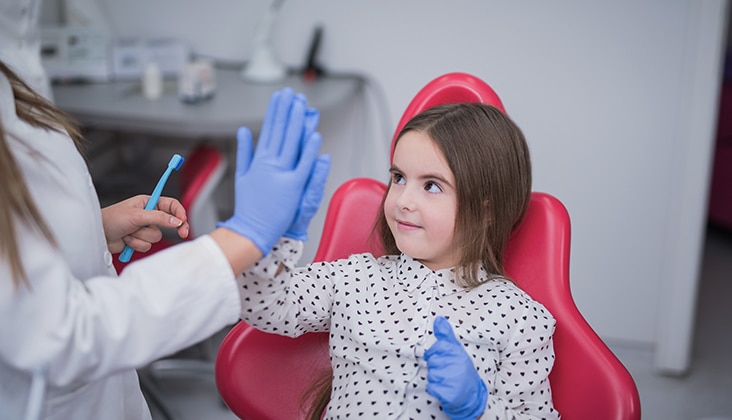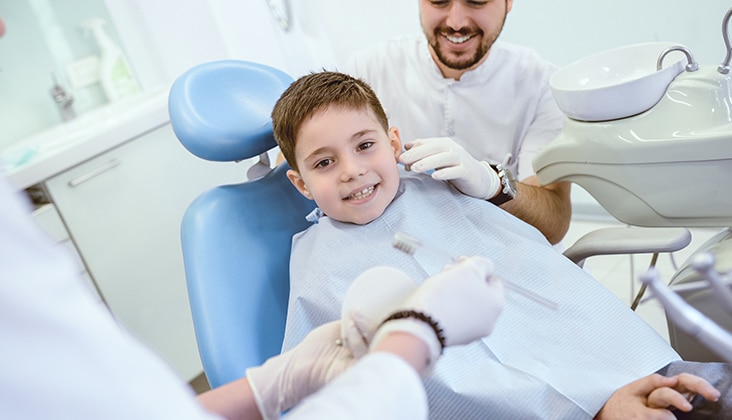Supporting Kids in the Dental Chair
A child’s level of cooperation and ability to follow instructions from the dental team directly influence how well a restorative or surgical procedure can be performed and even what materials can be used. It is the clinician’s responsibility to safely and effectively guide the child’s behavior during all pediatric procedures. Conventional communication techniques should be employed at all times and might include demonstration via the tell-show-do approach, setting clear expectations for the child at each visit, and positive reinforcement. While these techniques work well for most children, when a child’s behavior or ability to cooperate is less than ideal, oral health professionals must adapt their treatment to account for behavior management. Many pre-cooperative and highly anxious or fearful children require more advanced or invasive methods of behavior management, including pharmacological techniques, such as procedural sedation and general anesthesia.
Early childhood caries (ECC) is an age-defined diagnosis of caries in the primary dentition in children younger than what age?
 FluxFactory / E+
FluxFactory / E+
When assigning risk, an oral health professional’s subjective assessment, intuition, and local context often serve as risk assessment tools.
 zeljkosantrac / E+
zeljkosantrac / E+
Safe and compassionate treatment that can improve the oral health trajectory of a child, not a tooth, is the ultimate goal.
 Mladen Sladojevic / E+
Mladen Sladojevic / E+
No sedation should ever be performed by untrained or ill-prepared providers.
 DjelicS / E+
DjelicS / E+
Broader medical and dental risk assessment for the pediatric patient should remind clinicians to individualize treatment plans based on which of the following?
 pixelfit / E+
pixelfit / E+
Clinical and nonclinical data and risk assessments are driving the profession toward precision dentistry.
 AleksandarGeorgiev / E+
AleksandarGeorgiev / E+
Share your Results:

